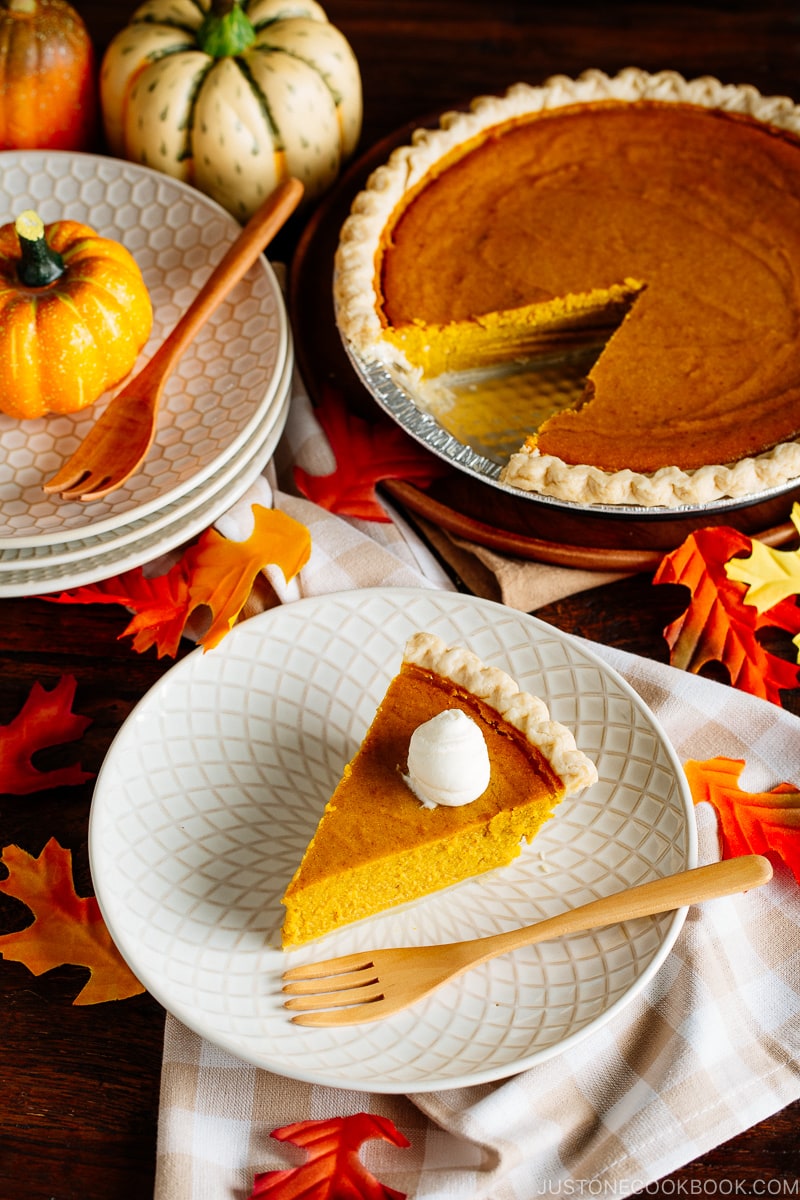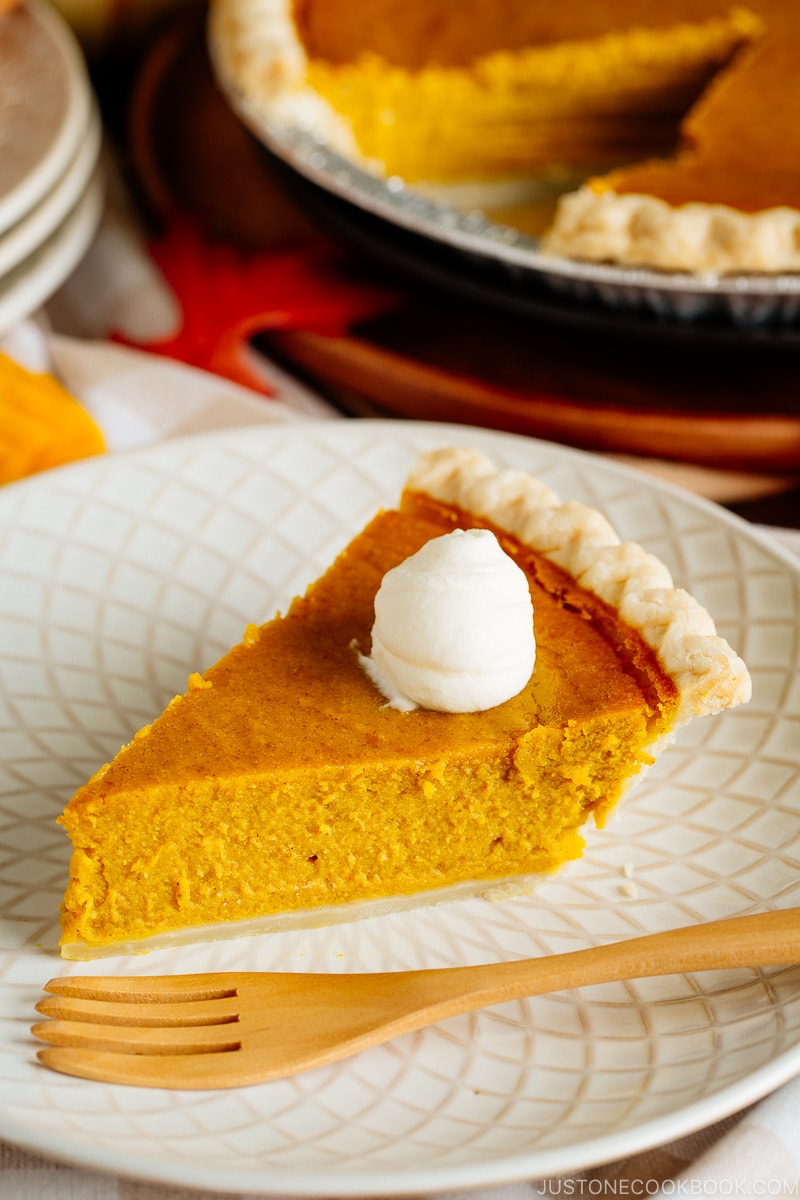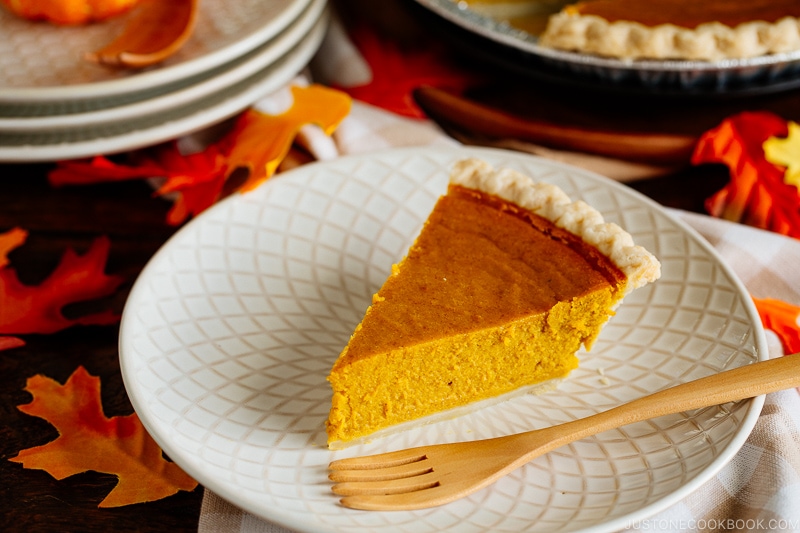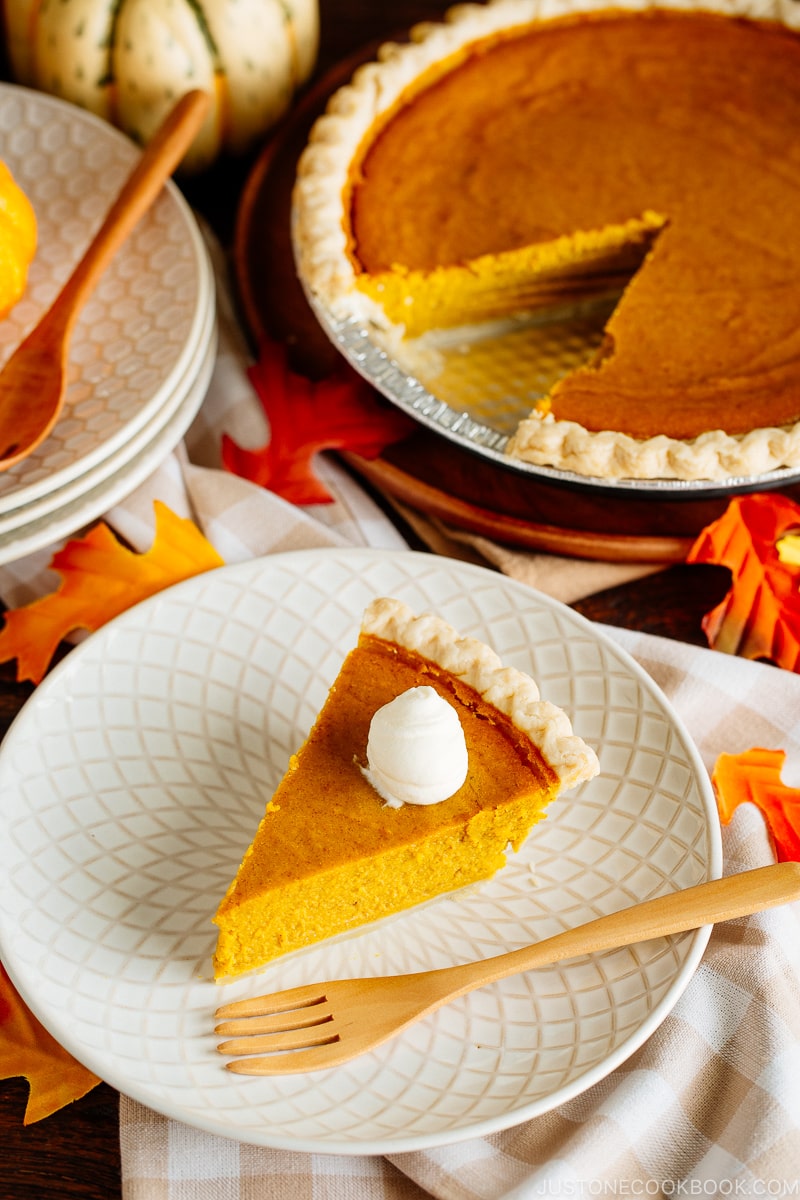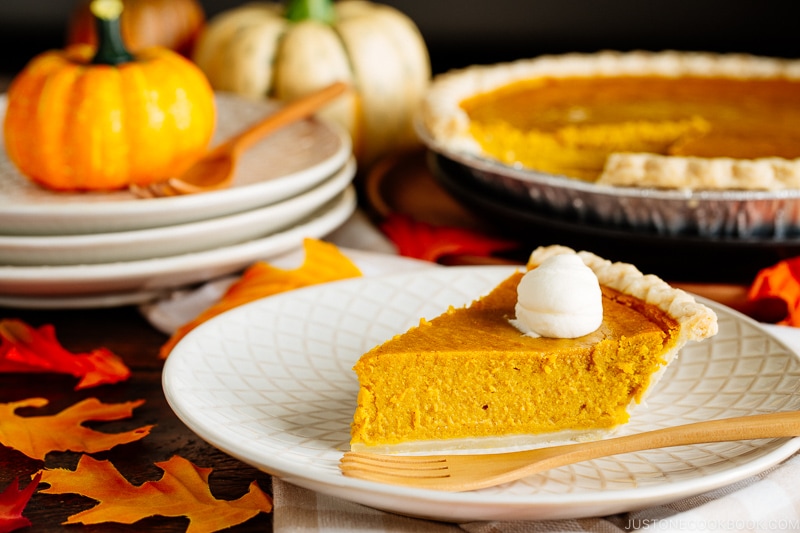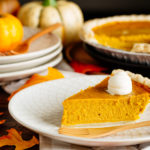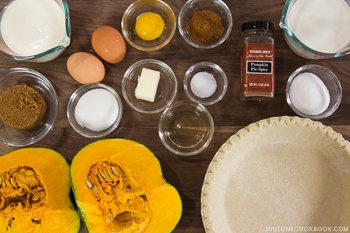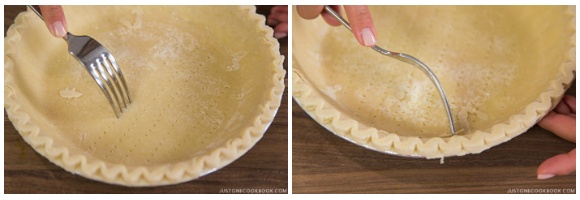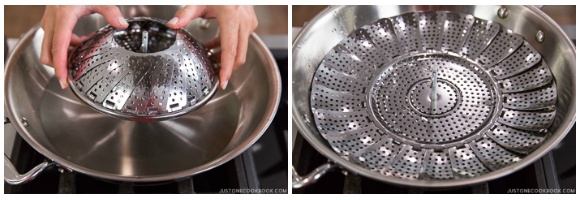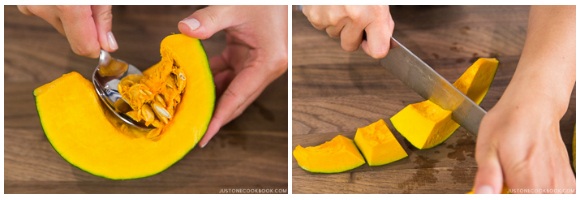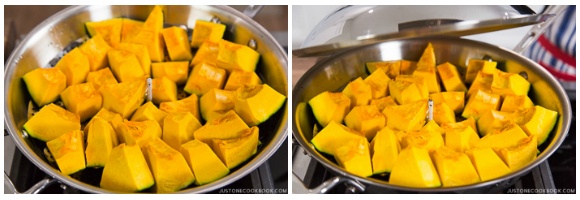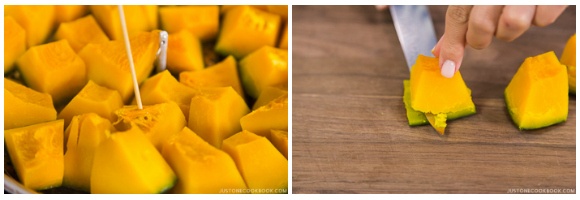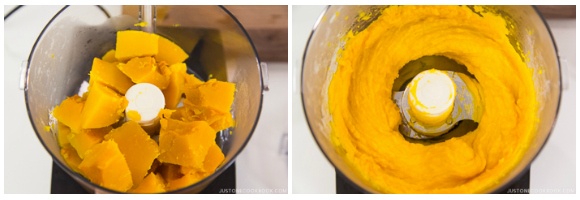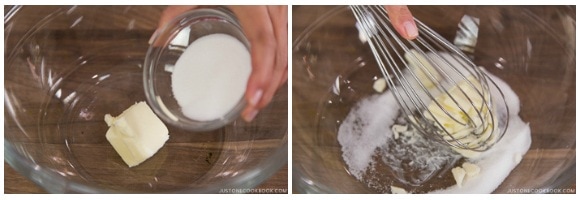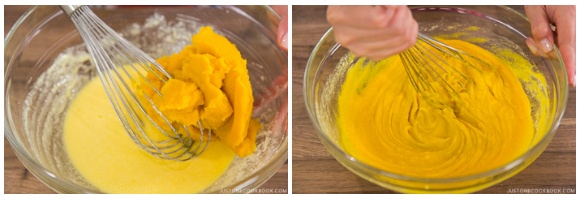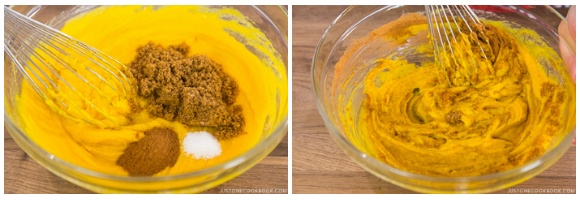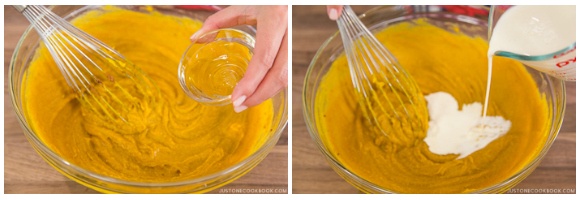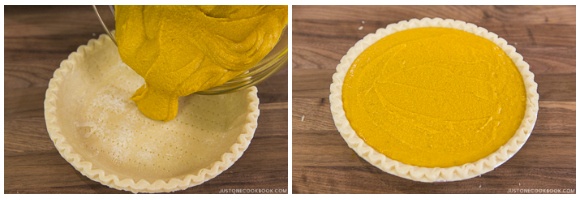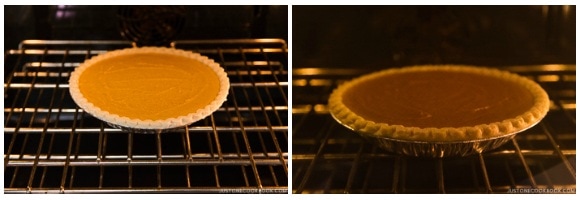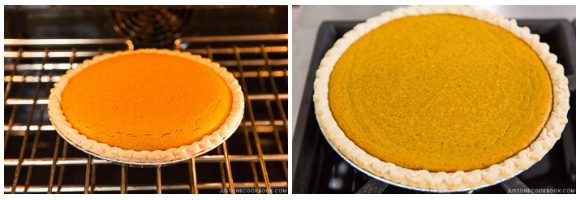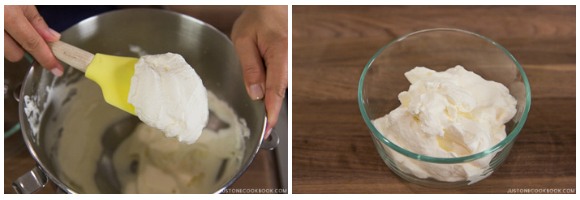Thanksgiving is in less than a week, and if you haven’t decided on what dessert to serve, I got you covered. This decadent Kabocha Pie (かぼちゃパイ) is super easy to make and will impress your holiday dinner guests!
3 Hacks for Easy Kabocha Pie
1. Use the Frozen Pie Shells or Pie Crusts
Store-bought pie crusts are great for a beginner baker. Making your own pastry shell can be challenging and time-consuming, especially if you’ve never tried making it before. For this Kabocha Pie recipe, you can purchase a ready-made pie shell from your grocer’s freezer. What brand should you buy? Personally, I like Wholly Wholesome Organic Traditional 9″ Pie Shells because even without blind baking (read the next section), the bottom of the crust does not get soggy! The crust texture is light and flaky with a crisp edge, and it has toasty buttery flavors that are quite delicious. It also comes with on a pie dish so you don’t need to purchase additional pie trays. I’ve also tried Trader Joe’s pie sheet and it’s one of our favorites as well. But Trader Joe’s Pie Crusts are pastry sheets, which requires your own pie dish. If you don’t bake often, the pie shell I mentioned above might be a better choice.
2. Steam Kabocha
Most of you probably roast/bake pumpkins and squash in the oven. However, in Japan, steaming or microwaving kabocha is the mainstream. Maybe it’s because we don’t have an American-size oven and roasting is not a common cooking method in Japan. From my own cooking experience, I recommend steaming kabocha. It only requires 15 minutes of steaming (vs. 45-60 minutes of roasting/baking at 400F). Also, steaming helps retain the moisture content in the kabocha during the cooking process.
3. Use Pumpkin Pie Spice
For those of you who’re not in the U.S., pumpkin pie spice is an American spice mix commonly used in pumpkin pie and pumpkin spice latte (or pumpkin smoothie for a healthier version). It’s a really convenient spice to have during the holiday season. It is generally a blend of powdered cinnamon, nutmeg, ginger, cloves, and allspice. If you can’t get this spice, you can mix 1 tablespoon ground cinnamon, 2 teaspoons ground ginger, 1/2 teaspoon allspice, 1/2 teaspoon ground cloves, and 1/2 teaspoon ground nutmeg for about 2 tablespoons of homemade pumpkin pie spice blend.
Prebake or Not to Prebake Pie Crust
Pre-baking the pie crust before adding the filling is called “Blind Bake” and most of the pies, tarts, and quiches call for pre-baking. This technique is used to make sure the bottom of the pie is crisp and will hold up the soggy contents. Also, it’s good to pre-bake when your pie is going to spend minimal time in the oven. One drawback of blind bake is that you will need to account for an additional 1 hour or so to the cooking process. 15-20 minutes to blind bake, then another 30 minutes for the crust to cool before adding the filling and baking again. While it requires extra cooking time, the investment is well worth it to prevent soggy bottoms and blown-out pie crust. For this recipe, I skipped the blind bake process. The pie crust I used held up the filling very well and the bottom of the crust never got soggy with the kabocha filling. If you’re using pie shells/crusts that are known for soggy crusts, I definitely recommend pre-baking. I put the instructions for pre-baking in the recipe.
3 Cool Kitchen Tools
1. Stainless Steel Steamer Basket
If you don’t have a steamer basket, I recommend you to invest in this stainless steel steamer basket that can be in pans and pressure cookers. You can steam vegetables, eggs, and even fish! I especially like it because it’s dishwasher-friendly and collapsible for easy storage! You can use how I used the stainless steel steamer basket in the kabocha pie video.
2. Food Processor
If you do a lot of pureeing, a big food processor like this is very helpful. I used to have a smaller food processor so I had to puree vegetables in batches. This 14-cup food processor is big enough for most of the pureeing job I have to do. One negative thing about this food processor is that it’s quite big and takes up a big space in your kitchen cabinet.
3. Fine Mesh Strainer
For those of you who don’t own a food processor or blender, this fine mesh strainer or a similar one is a cool tool to have! In Japanese cooking, we use this fine mesh strainer instead of a food processor or blender because there is no space in a typical Japanese kitchen for these gadgets. 🙂 Wish to learn more about Japanese cooking? Sign up for our free newsletter to receive cooking tips & recipe updates! And stay in touch with me on Facebook, Pinterest, YouTube, and Instagram.
